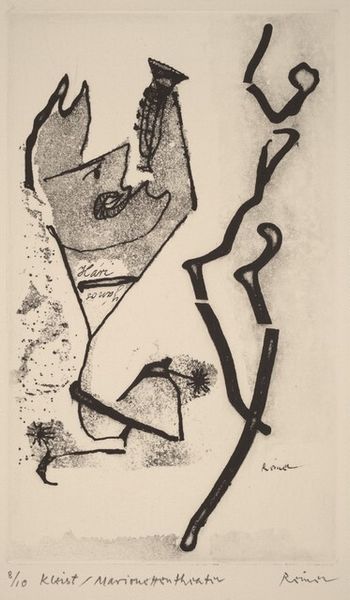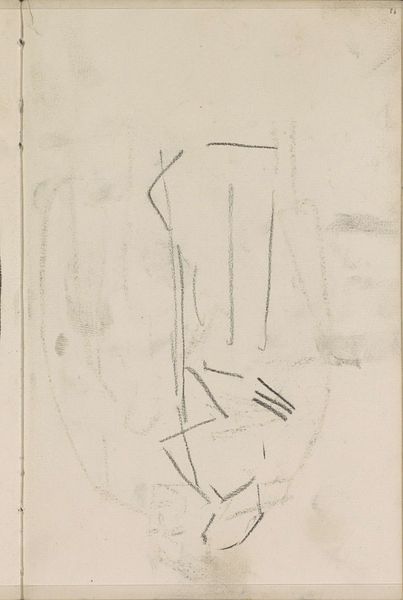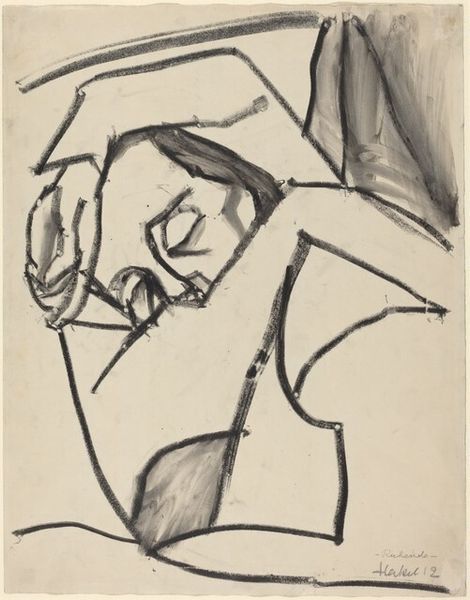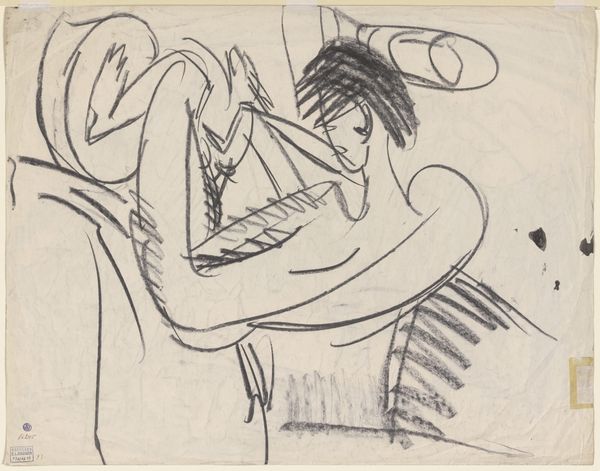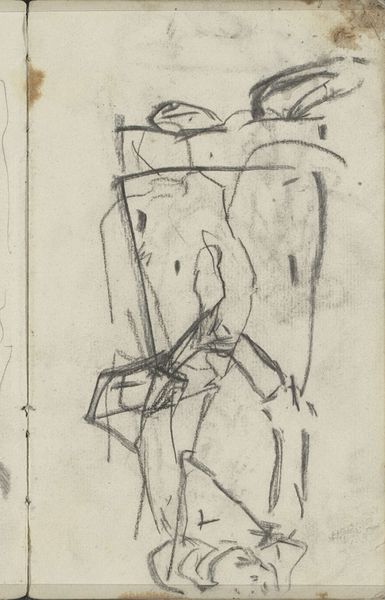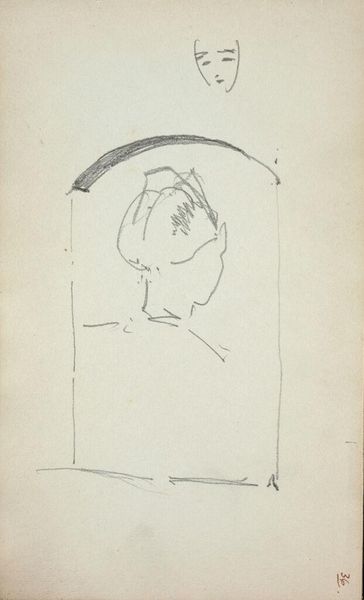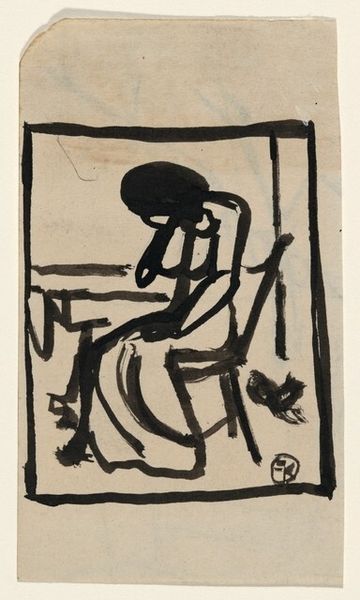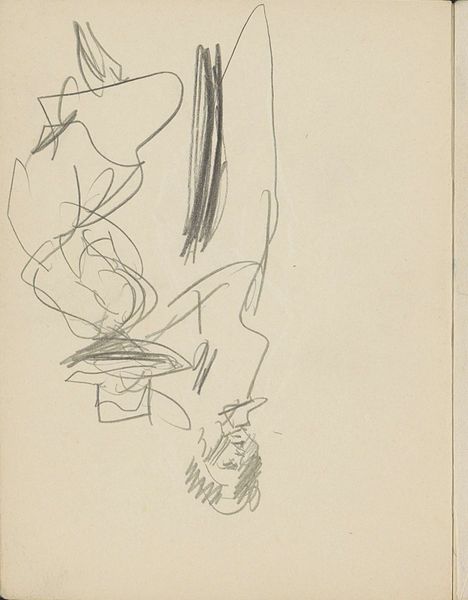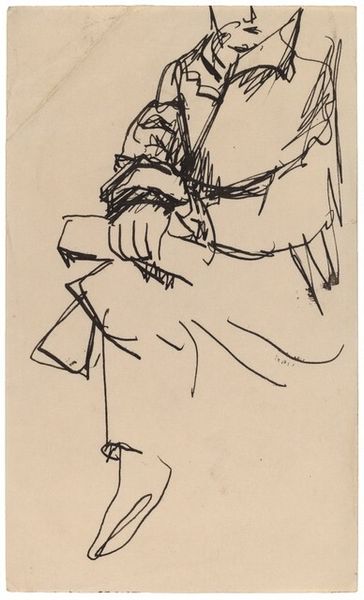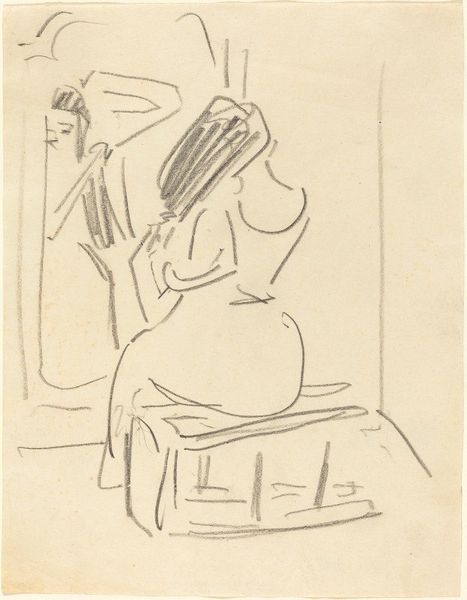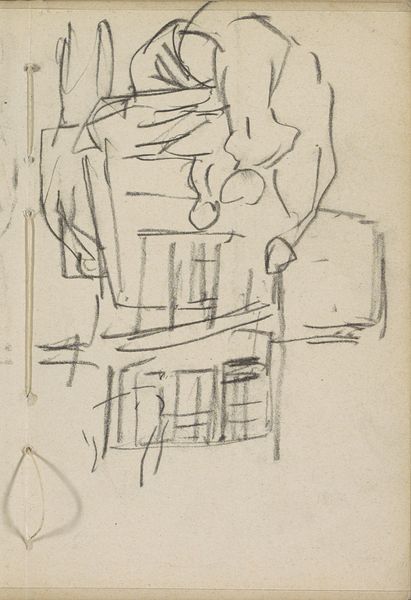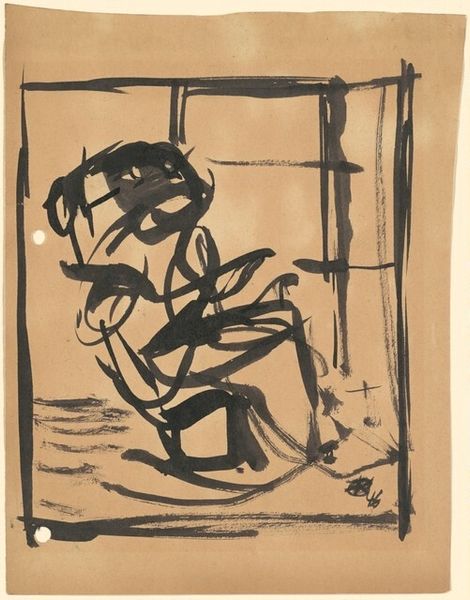
drawing, ink, pen
#
portrait
#
abstract-expressionism
#
drawing
#
ink drawing
#
pen sketch
#
figuration
#
ink
#
abstraction
#
pen
#
modernism
Dimensions: sheet: 16.51 × 11.75 cm (6 1/2 × 4 5/8 in.)
Copyright: National Gallery of Art: CC0 1.0
Curator: We’re looking at Franz Kline's “Seated Woman,” an ink drawing that dates circa 1946. Editor: It strikes me as immediate, almost raw. The bold, black lines feel less like description and more like… feeling made visible. There's a stark simplicity to its composition that borders on unsettling. Curator: That feeling resonates. Kline was working in a period of immense social and political upheaval following the Second World War, which fostered a spirit of existential questioning. His move toward abstraction mirrored this break from tradition and established norms in society and artmaking. Editor: The penwork is very telling. Notice how he builds volume not through shading but through sheer layering and directional strokes. Look especially at how the face is obscured and reduced to what could be a nest of nervous energy. Curator: It’s important to recall the art world’s landscape at this time. Figurative art was viewed with a certain suspicion by the avant-garde. Representing the human form so directly carried political implications. His rendering feels intentionally fractured, less an attempt to capture likeness and more to capture an emotional state through abstraction. Editor: Indeed. The contrast between the delicate lines of the figure and the bold strokes surrounding it amplifies a sense of confinement, as though the figure is both protected and imprisoned by these abstract frames. I get a powerful sensation of inner turmoil. Curator: Consider, too, the accessibility this offers. Kline was consciously sidestepping traditional hierarchies. The work, on a formal level, aligns with what other abstract expressionists were investigating, in a rejection of earlier representational forms of painting, or more broadly, truth-telling. The drawing makes few explicit references, yet is charged with emotional intensity. Editor: It is this very openness that's intriguing. A purely formal read reveals how dynamic Kline's use of contrast is and what he conveys, whereas socially and politically, the implications become much deeper. Curator: Precisely. Art doesn't exist in a vacuum; both readings give the work its vitality and multiple dimensions. Editor: Ultimately, its enduring strength resides in its capacity to viscerally touch the viewer through the artist's visual language.
Comments
No comments
Be the first to comment and join the conversation on the ultimate creative platform.
